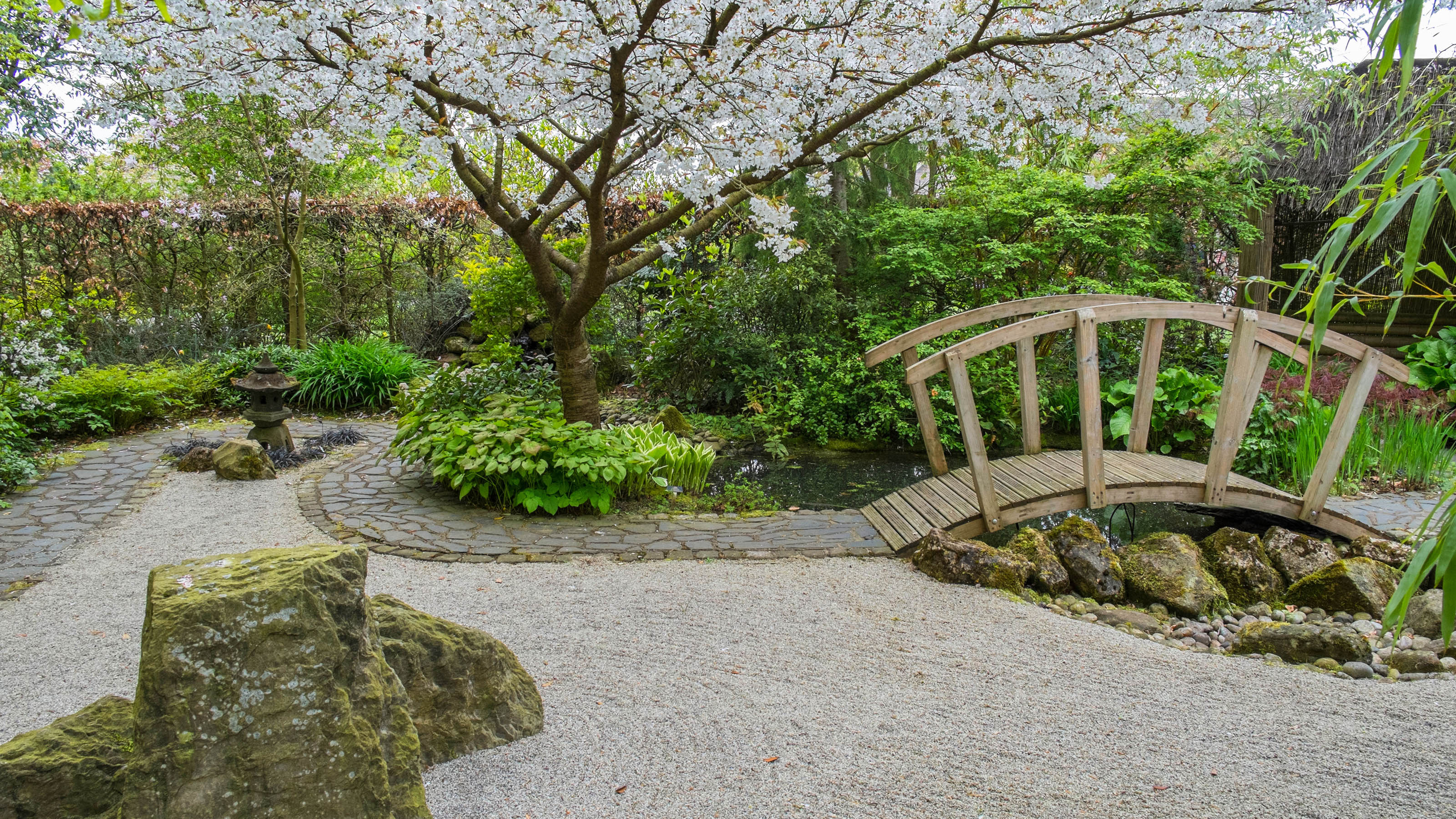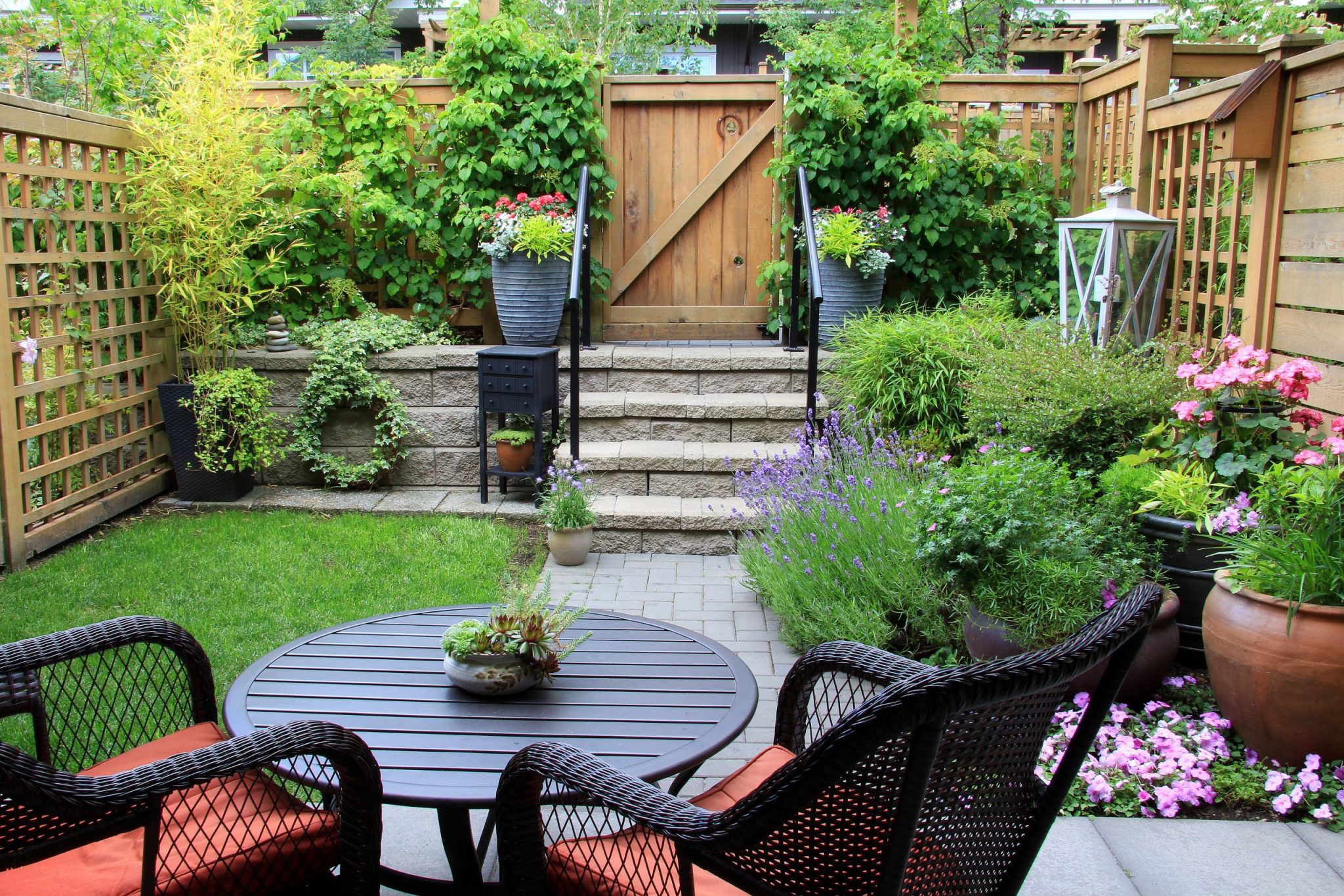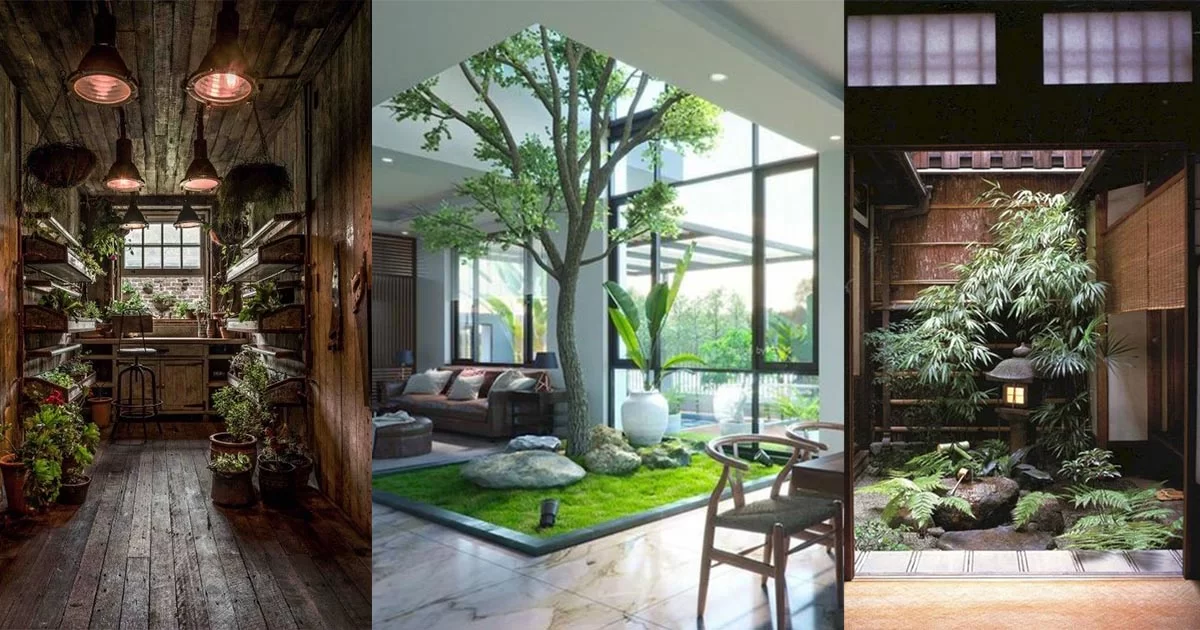

Articles
What Is A Zen Garden
Modified: May 6, 2024
Discover the peaceful art of gardening with a Zen garden. Create an oasis of tranquility in your outdoor space and find inner harmony through the nurturing power of gardening.
(Many of the links in this article redirect to a specific reviewed product. Your purchase of these products through affiliate links helps to generate commission for Storables.com, at no extra cost. Learn more)
Introduction
Welcome to the serene world of Zen gardens, where tranquility and harmony reign supreme. These beautiful outdoor sanctuaries have captivated the hearts and minds of many gardening enthusiasts around the world. The allure of Zen gardens lies in their simplicity and ability to create a peaceful atmosphere that promotes relaxation and introspection.
Zen gardens, also known as Japanese rock gardens or dry landscapes, have a rich history deeply rooted in the traditions of Zen Buddhism. Created as spaces for meditation and contemplation, these gardens were designed to evoke a sense of peace, mindfulness, and connection with nature.
In this article, we will explore the origins of Zen gardens, examine their key principles, discuss the components that make up these unique spaces, delve into the art of designing a Zen garden, explore the symbolism found within them, outline the benefits they provide, and offer tips on how to maintain these tranquil retreats.
So, take a deep breath, let go of the stresses of the day, and join us on a journey into the enchanting world of Zen gardens.
Key Takeaways:
- Zen gardens, rooted in Zen Buddhism, embody simplicity, balance, and harmony with nature. They offer a serene retreat for reflection, stress reduction, and connection with the natural world.
- Designing and maintaining a Zen garden is a creative and mindful endeavor, providing benefits such as stress reduction, meditative practice, and environmental harmony. It’s a sanctuary for self-discovery and inner peace.
Read more: What Is Zen Home Decor
Origins of Zen Gardens
The roots of Zen gardens can be traced back to ancient Japan and the influence of Zen Buddhism. Zen, which means “meditation” in Japanese, is a school of Buddhist philosophy that emphasizes the practice of mindfulness and attaining enlightenment through direct experience.
During the 14th century, Zen monks began creating gardens as an extension of their meditation practice. These gardens were originally constructed within the grounds of Zen Buddhist temples and served as spaces for quiet contemplation and reflection.
The concept of creating a Zen garden was inspired by the belief that connecting with nature and creating a harmonious environment can aid in the pursuit of enlightenment. By embodying elements of simplicity, minimalism, and natural beauty, Zen gardens became a physical representation of the Zen philosophy.
One of the earliest and most famous Zen gardens is the Ryoan-ji Temple Garden in Kyoto, Japan. Created in the late 15th century, this iconic garden features a carefully raked expanse of white gravel adorned with 15 strategically placed rocks. The arrangement of the rocks is said to invite contemplation and represents an abstract representation of nature.
As the popularity of Zen gardens spread, their influence extended beyond Japan. Zen monks brought the concept to other parts of Asia, including China and Korea, where variations of these gardens were created.
Today, Zen gardens can be found in various parts of the world, showcasing the enduring appeal and universal appreciation for their serene beauty and profound symbolism.
Principles of Zen Gardens
The essence of Zen gardens lies in their adherence to a set of guiding principles that reflect the fundamental tenets of Zen philosophy. These principles encompass simplicity, minimalism, balance, and harmony. Let’s explore each of these principles in detail:
- Simplicity: Zen gardens are characterized by their simplicity and intentional absence of unnecessary elements. The design aims to create a space free from distractions, allowing for focused meditation and contemplation.
- Minimalism: The use of minimalism in Zen gardens is evident in their clean lines, uncluttered spaces, and limited number of essential components. Each element is carefully chosen and arranged to create a sense of tranquility and balance.
- Balance: Achieving balance is a key principle in Zen gardens. This balance can be seen in the arrangement of rocks, plants, and other features, as well as the symmetry and proportion of the garden as a whole. The goal is to create a harmonious composition that promotes a feeling of equilibrium and calm.
- Harmony with Nature: Zen gardens seek to emulate the beauty and harmony found in nature. The use of natural materials such as rocks, gravel, and moss, along with the incorporation of flowing water or carefully positioned plants, helps establish a connection with the natural world.
- Emptiness: Emptiness, or “ma” in Japanese, is a concept that plays a significant role in Zen gardens. Emptiness refers to the space between objects and the importance of negative space. By leaving areas of the garden intentionally empty, it allows for contemplation and enhances the overall design aesthetic.
By adhering to these principles, Zen gardens create an environment that promotes a sense of peace, mindfulness, and oneness with nature. They offer a sanctuary from the chaos of the outside world, allowing individuals to find solace and reconnect with their inner selves.
Components of a Zen Garden
Zen gardens are composed of various elements, carefully selected and arranged to create a cohesive and serene atmosphere. Here are the key components commonly found in Zen gardens:
- Gravel or Sand: The ground of a Zen garden is often covered with gravel or sand, symbolizing water or the ocean. It is raked in distinctive patterns, representing the ripples of water. The repetitive act of raking is not only meditative but also adds a dynamic element to the garden.
- Rocks or Stones: Rocks play a central role in Zen gardens, symbolizing mountains or islands. They are strategically placed to create focal points or represent natural landscapes. The arrangement of rocks is done with careful consideration for size, shape, and placement to achieve aesthetic and philosophical balance.
- Pathways: Pathways made of stepping stones or gravel guide visitors through the garden, encouraging a slow and mindful stroll. The path may meander to promote a sense of discovery and create a meditative journey.
- Bridges: In larger Zen gardens, bridges may be included to span over small streams or dry river beds. These bridges symbolize the transition from the everyday world to a more contemplative realm.
- Plants and Trees: While Zen gardens are known for their minimalism, carefully selected plants and trees are sometimes incorporated to add color, texture, and a sense of vitality. These may include moss, bonsai trees, or specific types of shrubs that can withstand the harsh conditions of a dry landscape.
- Water Features: In some Zen gardens, the inclusion of water features such as small ponds, fountains, or cascading waterfalls adds a soothing and natural element. The sound and movement of water contribute to the overall tranquility of the garden.
- Stone Lanterns or Ornaments: Stone lanterns, statues, or other simple ornaments are often placed strategically to create focal points and evoke a sense of spirituality. These elements contribute to the meditative ambiance of the garden.
It is important to note that the specific components and their arrangement may vary from one Zen garden to another. However, the overall intention remains the same – to create a harmonious space that promotes reflection, mindfulness, and a deeper connection with nature.
Designing a Zen Garden
Designing a Zen garden requires thoughtful consideration and attention to detail. Here are some key principles and steps to keep in mind when creating your own Zen retreat:
- Define the Space: Determine the size and location of your Zen garden. It can be a small corner of your backyard, a dedicated courtyard, or even an indoor space. Consider the amount of sunlight, accessibility, and privacy when choosing the area.
- Create a Layout: Sketch out your desired garden layout, taking into consideration the elements you wish to include. Decide on the placement of rocks, pathways, and other components to create a visually appealing and balanced design.
- Choose the Materials: Select the materials that will form the foundation of your Zen garden. Gravel or sand can be used for the ground, while rocks, stepping stones, and other natural materials will add texture and interest.
- Consider Proportions: Aim for balance and proportion in your design. Make sure the sizes of rocks, plants, and other features are harmonious and visually pleasing. Avoid overcrowding or creating an imbalance that disrupts the overall tranquility of the space.
- Create Focal Points: Introduce focal points by strategically placing rocks, lanterns, or other ornaments. These focal points should draw the eye and create a sense of interest within the garden.
- Embrace Simplicity: Keep the design simple and uncluttered. Avoid excessive ornamentation and stick to a minimalistic aesthetic. Each element should have a purpose and contribute to the overall sense of tranquility.
- Choose the Right Plants: Select plants that thrive in your climate and are suitable for a Zen garden. Look for those that are low maintenance, have a minimalistic appearance, and can withstand the dry conditions often found in Zen gardens. Moss, bamboo, and bonsai trees are popular choices.
- Create a Raking Pattern: Rake the gravel or sand in a pattern that reflects the movement of water. Consistent, flowing lines or concentric circles are common patterns that add a sense of serenity to the garden.
- Integrate Zen Elements: Consider adding a water feature, such as a small pond or fountain, to incorporate the element of water. Additionally, meditative elements like a seating area or a Zen meditation rock can enhance the overall experience.
- Seek Balance and Harmony: Throughout the design process, continuously evaluate the balance and harmony of the elements. Step back and assess the overall composition to ensure it aligns with the principles and goals of a Zen garden.
Remember, designing a Zen garden is a personal and creative endeavor. Allow your intuition and the principles of Zen philosophy to guide you, and adapt the design to suit your own preferences and surroundings. The result will be a serene and contemplative space where you can find solace and reconnect with your inner self.
A Zen garden, also known as a Japanese rock garden, is a minimalist and meditative garden style that typically features rocks, gravel, and carefully raked patterns to represent water. It is designed to promote relaxation and contemplation.
Read more: What Gardeners Need
Symbolism in Zen Gardens
Zen gardens are not just visually stunning landscapes; they are also filled with rich symbolism that adds depth and meaning to the design. Here are some key elements and their symbolic significance within Zen gardens:
- Rocks: Rocks are considered the backbone of a Zen garden. They represent stability, strength, and the enduring nature of life. The arrangement of rocks in a garden often mimics natural landscapes, such as mountains or islands, fostering a connection with the earth and invoking a sense of serenity.
- Gravel or Sand: The carefully raked gravel or sand in a Zen garden symbolizes waves or flowing water. This representation of water adds a dynamic element to the garden and encourages a sense of movement, reminding visitors of the impermanence of life and the ever-changing nature of the world.
- Pathways: The pathways that wind through a Zen garden signify a journey or a spiritual path. Walking along these paths encourages mindfulness and reflection, as visitors contemplate their own life’s journey and seek inner peace.
- Water Features: Inclusion of water elements, such as a pond or fountain, represents the flow of life and the cleansing of the soul. Water is seen as a purifying force, capable of bringing tranquility and renewal.
- Plants and Trees: The selection of plants and trees in a Zen garden carries symbolic meanings. Moss represents age and wisdom, while bamboo signifies flexibility and resilience. Bonsai trees, with their miniature size and meticulous care, symbolize harmony, patience, and the beauty of nature.
- Stone Lanterns or Ornaments: Stone lanterns or ornaments are often placed strategically within Zen gardens to evoke a sense of spirituality and illuminate the path. They symbolize enlightenment and provide a focal point for meditation and contemplation.
- Balance and Harmony: One of the fundamental principles of Zen philosophy is the pursuit of balance and harmony. The design of a Zen garden embodies this principle, with careful consideration given to the placement of elements to create a sense of equilibrium. It reminds us of the importance of finding balance and harmony in our own lives.
- Emptiness: The intentional presence of empty spaces, known as “ma,” allows for contemplation and stillness. Emptiness symbolizes the potential for growth, openness to new experiences, and the freedom from attachment.
Together, these symbolic elements create a multi-layered experience within a Zen garden. Visitors are invited to engage with the garden, contemplate the deeper meanings behind each element, and reflect on the transient nature of existence and the pursuit of inner peace.
Benefits of Zen Gardens
Zen gardens offer a multitude of benefits that go beyond their aesthetic appeal. These tranquil spaces provide a sanctuary for the mind, body, and soul. Here are some of the key benefits of having a Zen garden:
- Stress Reduction: Spending time in a Zen garden promotes relaxation and helps to reduce stress levels. The calming elements, such as the gentle sound of flowing water and the rhythmic patterns of the raked gravel, create a peaceful environment that soothes the mind and allows for a release of tension.
- Meditative Practice: Zen gardens provide an ideal setting for meditation and contemplation. The serene atmosphere, combined with the simplicity and minimalism of the design, helps to quiet the mind, focus attention, and deepen the practice of mindfulness.
- Connection with Nature: Zen gardens allow individuals to reconnect with the natural world. The inclusion of natural elements such as rocks, plants, and water features fosters a sense of harmony and reminds us of our intimate relationship with the environment.
- Enhanced Well-being: By creating a space that promotes relaxation and mindfulness, Zen gardens contribute to overall well-being. The soothing and calming environment can improve mood, reduce anxiety, and increase a sense of contentment and inner peace.
- Creative Expression: Designing and maintaining a Zen garden provides an opportunity for creative expression. Individuals have the freedom to choose and arrange elements that resonate with their personal aesthetic and create a unique sanctuary that reflects their own style.
- Focus and Concentration: The simplicity and minimalistic design of Zen gardens can enhance focus and concentration. The deliberate and intentional arrangement of elements draws attention and encourages present moment awareness, allowing for deeper immersion in tasks or activities.
- Sensory Experience: Zen gardens engage the senses, offering a multisensory experience. The sound of trickling water, the texture of gravel or sand underfoot, and the aroma of surrounding plants stimulate the senses and promote a heightened state of awareness.
- Environmental Harmony: Zen gardens emphasize the harmony between humans and the natural environment. By incorporating sustainable practices and native plants, these gardens can have a positive impact on the local ecosystem, promoting biodiversity and supporting pollinators.
- Reflection and Self-Discovery: The serene and reflective nature of Zen gardens creates an environment conducive to introspection and self-discovery. It provides a space for individuals to gain clarity, cultivate self-awareness, and explore their inner thoughts and emotions.
Whether you are seeking a tranquil retreat, a space for mindfulness practice, or a way to reconnect with nature, a Zen garden offers a myriad of benefits that contribute to a balanced and fulfilling lifestyle.
Maintaining a Zen Garden
While Zen gardens are known for their minimalist design, they do require regular maintenance to ensure their beauty and tranquility are preserved. Here are some essential tasks to keep in mind when maintaining a Zen garden:
- Raking: Regularly rake the gravel or sand in your Zen garden to maintain the distinctive ripple patterns. This not only keeps the garden looking neat but also allows for relaxation and mindfulness during the process.
- Weeding: Remove any weeds or unwanted vegetation that may emerge in the garden. Weeds disrupt the clean lines and aesthetic appeal of the space. Regular weeding prevents them from taking root and ensures the garden remains tidy.
- Pruning and Trimming: Trim and prune plants to maintain their shape and prevent them from taking over the garden. Pruning also promotes healthy growth and prevents overcrowding, keeping the overall design balanced and harmonious.
- Water Features: If your Zen garden includes a water feature, such as a pond or fountain, keep it clean and free from debris. Regularly check the water levels and clean the filters to maintain the flow and clarity of the water.
- Stone Care: Inspect and clean the rocks or stones in your Zen garden periodically. Remove any dirt, moss, or debris that may accumulate on them. This not only enhances their appearance but also helps maintain their symbolic significance.
- Seasonal Adjustments: Make adjustments to your Zen garden according to the seasons. For example, you may need to change the plants or add seasonal elements to maintain the garden’s aesthetic appeal throughout the year.
- Moss Care: If you have moss in your Zen garden, ensure it remains healthy and vibrant. Keep the area around the moss free from debris, and mist it with water regularly to maintain its moisture and prevent it from drying out.
- Inspect for Damage: Regularly inspect the garden for any signs of damage, such as cracks in rocks or damage to pathways. Repair or replace any damaged elements to ensure the integrity of the overall design.
- Environmental Considerations: Consider the impact of your Zen garden on the local environment. Choose native plants that require minimal water and fertilizer, and avoid the use of pesticides that can harm beneficial insects.
- Enjoy and Reflect: Lastly, take the time to fully enjoy and reflect in your Zen garden. Sit in quiet contemplation, practice meditation, or simply immerse yourself in the peaceful atmosphere that you have created.
Maintaining a Zen garden is an ongoing practice that requires regular attention and care. By dedicating time to these maintenance tasks, you can ensure that your Zen garden remains a tranquil and serene sanctuary for years to come.
Conclusion
The allure and significance of Zen gardens lie in their ability to create a serene and meditative space that promotes inner peace and harmony. With their minimalist design, carefully chosen elements, and rich symbolism, these gardens offer a retreat from the chaos of everyday life, allowing individuals to reconnect with themselves and the natural world.
From their origins in Zen Buddhism to their widespread appreciation around the globe, Zen gardens have captured the hearts of many gardening enthusiasts and seekers of tranquility. They provide a space for reflection, mindfulness, and deep contemplation, offering a respite from the stresses and demands of modern living.
By incorporating key principles such as simplicity, minimalism, and environmental harmony, Zen gardens create an environment that fosters relaxation, stress reduction, and a sense of well-being. They engage the senses, inviting individuals to immerse themselves in the sound of flowing water, the texture of raked gravel, and the beauty of carefully arranged elements.
Maintaining a Zen garden requires diligent care, from raking and weeding to pruning and adjusting throughout the seasons. These regular maintenance tasks ensure the garden retains its aesthetic appeal and continues to provide a serene and contemplative atmosphere.
Whether you have a small corner of your backyard or a dedicated space, designing and creating your own Zen garden is a deeply rewarding experience. It allows you to express your creativity, find solace in nature, and cultivate a sense of inner peace and mindfulness.
So, if you seek a sanctuary that promotes relaxation, fosters mindfulness, and unveils the beauty of simplicity, consider creating a Zen garden. Immerse yourself in the soothing elements, find stillness in the movement of raked gravel, and rediscover the profound connection between mind, body, and nature.
Let the beauty of a Zen garden guide you on a journey of self-discovery, where tranquility and serenity await.
Excited to extend your knowledge on serene garden designs? Whether you're planning to craft a traditional Japanese garden or looking for unique rock garden ideas, our upcoming articles are perfect for you. Dive into the art of creating a Japanese garden, where simplicity meets elegance. Or, if diverse textures and forms intrigue you, our collection of rock garden ideas will surely inspire. Both pieces are filled with practical tips and captivating visuals to help you transform any outdoor space into a place of beauty.
Frequently Asked Questions about What Is A Zen Garden
Was this page helpful?
At Storables.com, we guarantee accurate and reliable information. Our content, validated by Expert Board Contributors, is crafted following stringent Editorial Policies. We're committed to providing you with well-researched, expert-backed insights for all your informational needs.















0 thoughts on “What Is A Zen Garden”